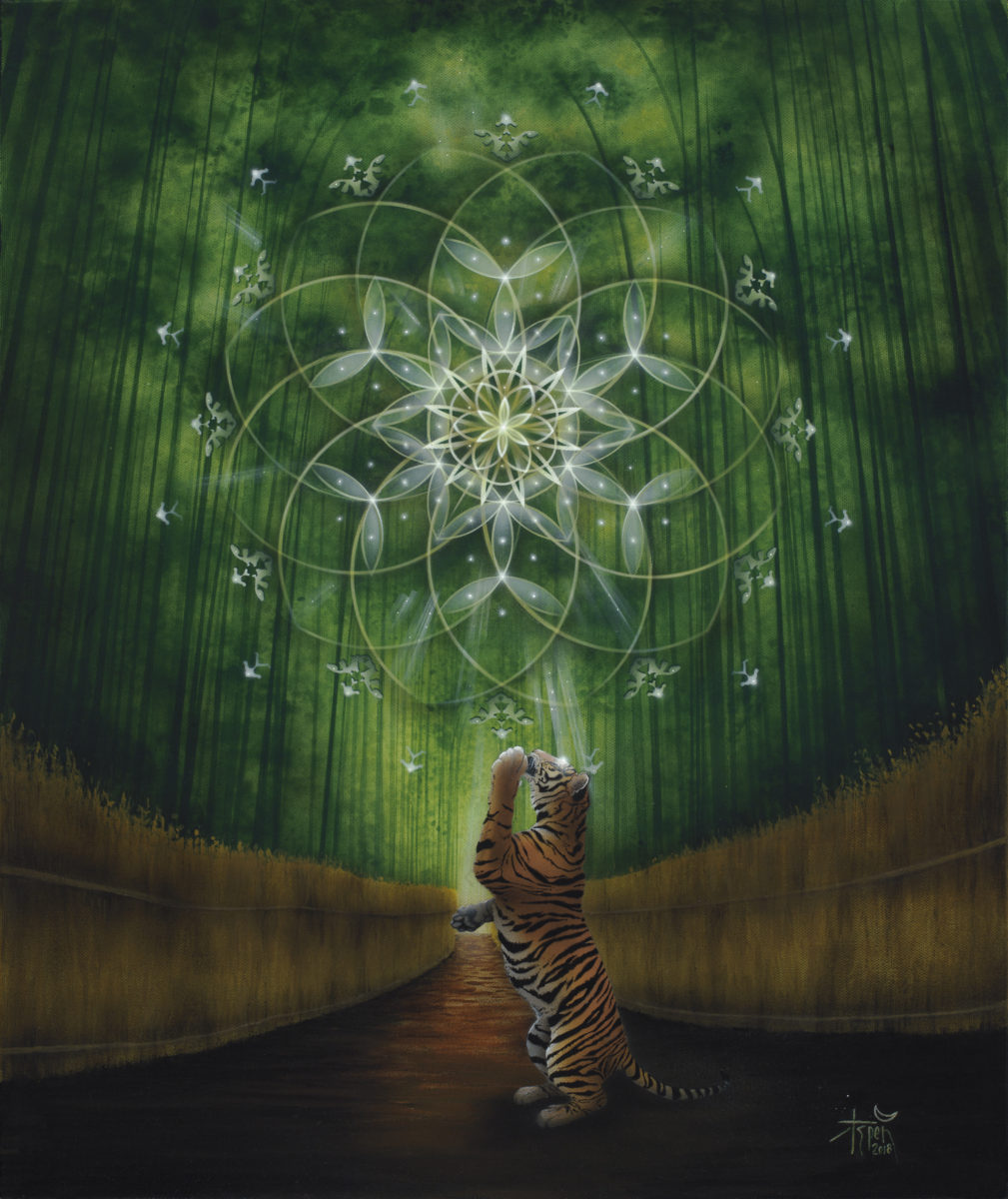There are a lot of technical challenges around creating a perfect Sri Yantra form. Just getting Nine triangles to line up tip to end is a challenge in and of itself, but then add the problem of creating a maximum number of possible intersections (which is 43 in case you hadn’t figured that out yet…) where no two triangles touch side to side (tips together or tip to side only) and that no more than three triangles can touch at any particular tip… You’re starting to get the idea.
Solving the Sri Yantra, by the Sri Yantra Research Center has an excellent in depth explanation of the Sri Yantra symbol. Along with dealing with the complexity of lining up 9 triangles, the article also outlines that there are three key factors that all must be met concurrently in order to create an accurate representation. And this is no easy task to do with a pencil, compass, and straight edge. The three key factors are,
- Concurrency: All the triple intersection meet at the same point rather than crisscrossing.
- Concentricity: The bindu point, which the small point located in the central triangle, should be located in the center of the innermost triangle. This can be measured precisely by placing the bindu at the center of a circle that fits inside this triangle. This is known in mathematics as the incenter of a triangle.
- Equilateral Inner Triangle: The central triangle is the central lens of the Sri Yantra and therefore, is optimally an equilateral (i.e. 60 degree) downward pointing triangle.
Three Dimensions of Sri Yantra
Now try taking the same requirements and translating that into a 3-dimensional form. But the Sri Yantra is a three dimensional concept and there are many examples, some centuries old, where this has been represented–though to a lesser degree of accuracy. In fact, there are three main ways the symbol is represented, Plane or flat, Pyramidal (called Meru), and Spherical (called Kurma).
An excellent source of how the Sri Yantra moves into three dimensions and additional discussion around the cymatics idea can be found in the article “a zesty, life-affirming approach to meditation,” by Lorin Roche, Ph.D. It talks the reader through visualizing the yantra through progressive levels of dimension, motion, and complexity.
Click HERE to see some excellent photos of objects with circular or three dimensional representations of the Sri Yantra. There are even many building which are obviously influenced by the symbol including these complied by the Sri Yantra Research Center.
-am. July 2012

